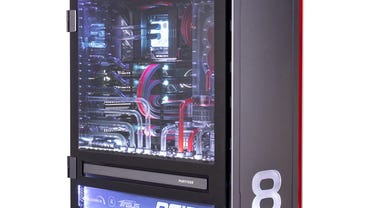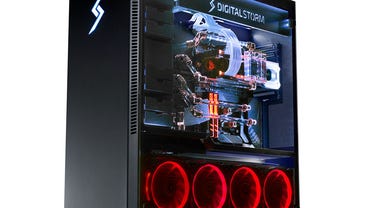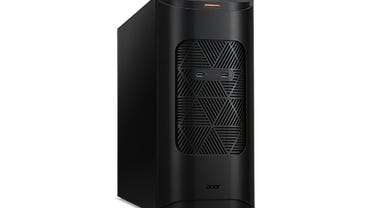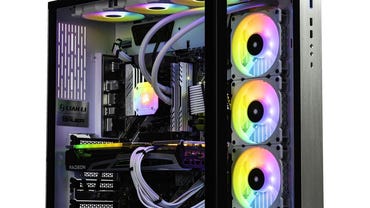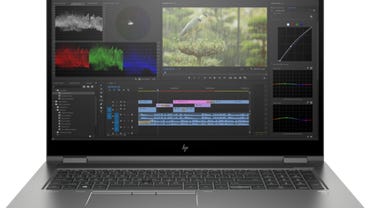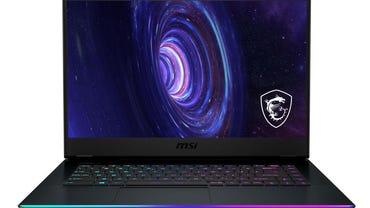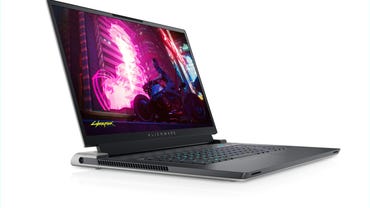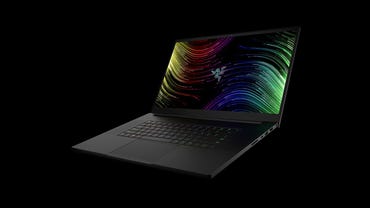We’ve covered the best and cheapest gaming laptops, so it only stands to reason that we should also talk about the most expensive gaming PCs you can buy. Most of the picks I have for this list are meant specifically for gaming, though I did include a few workstations that could be converted to gaming machines by enterprising individuals. Whatever you think “expensive” means when it comes to gaming rigs, I assure you that you’re going to have to raise your expectations significantly. And once you’ve recovered from seeing the, frankly, ridiculous sticker prices on some of these builds, I’ll explain why someone would want to spend that much on a luxury gaming machine. And just like ripping off a band-aid, let’s dive right in and look at some of the most expensive gaming PCs available right now.
Also: Best gaming laptop 2022: Top rigs for on-the-go gaming
The most expensive gaming desktops
OverclockersUK 8Pack OrionX2 Dual System
You can literally buy a 2022 Camaro for less (no, seriously)
CPU: Intel Core i9-10980/Intel Core i7-10700K | RAM: 128GB DDR4/32GB DDR4 | Storage: 14TB HDD/x2 2TB SSD | GPU: x3 Nvidia GeForce RTX 3090 water cooled | Power supply: 2000W Super Flower Leadex Platinum
Are you sitting down? This custom, dual-system gaming rig from OverclockersUK will set you back almost $44,000 after currency exchange. Why on earth would someone pay that much for a computer? Well, this build is actually two computers in one case. That means it has double components: two CPUs, two motherboards, etc. It’s meant for hardcore content creators who want to record and stream in 4K or even 8K video, which eats up tons of resources. By having two CPUs, they can split tasks between them for faster processing and keep their computer from dying out of sheer spite. That’s also why it has such huge storage capacities. Raw 4K and 8K video files are gigantic; we’re talking double-digit gigabytes worth of information. And having two CPUs means the build can support a massive amount of system memory. So while it does cost slightly more than a 2022 Chevy Camaro 2SS, if a creator has tens of millions of YouTube or Twitch subscribers, I can see why they’d want to drop the equivalent of a 4-year degree at a state college on a gaming computer.
Pros:
- Dual-system build prevents CPU bottlenecks
- Truly massive storage capacity and system memory
- 3 RTX 3090 GPUs
Cons:
- Painfully expensive
- Not best-suited for everyday gamers
- Possible customs delays for customers outside the UK
Aventum X
Budget? We don’t know her
CPU: Up to Intel Core i9-10980XE or AMD Threadripper PRO 3975WX | RAM: Up to 256GB DDR4 | Storage: Up to 56TB (SSD and HDD) with up to Raid 50 | GPU: Up to x2 Nvidia GeForce RTX 3090 water cooled | Power supply: Up to 1500W EVGA or Thermaltake 80 Plus Gold
The base models for the Aventum X start at around $4,200 for the Intel Core X build and $9,000 for the AMD Threadripper PRO. And the Threadripper PRO can cost as much as $24,000 with the high-end configuration. The top configuration gets you a staggering 256GB of RAM, 56TB of storage space across both SSDs and HDDs, and two GeForce RTX 3090 graphics cards with water cooling. For reference, with that much storage space, you can have up to 1,400 hours of 4K video, 28,000 hours of HD video, and up to 14million photos. Like the OrionX2, this is meant for hardcore content creators dealing with raw 4K and 8K video as well as highly technically demanding games. While it doesn’t have the advantages of a dual-system build, it still uses top-of-the-line components to lessen process bottlenecks and other technical issues that can ruin a long day’s work of recording, editing, or streaming. If $24,000 is a bit too much to pay all at once, there are financing options available.
Pros:
- Excellent components
- Lifetime warranty available
- Financing options available
Cons:
- Outrageously expensive
- Up to 28 days of building and shipping time
Acer ConceptD
Dual-CPU overkill with a price to match
CPU: x2 Intel Xeon Gold 6148 | RAM: 192GB DDR4 | Storage: 1TB SSD (7 drive slots available) | GPU: Nvidia Quadro RTX 6000 | Power supply: 1000W
This desktop is designed for engineering use, with a Quadro RTX 6000 GPU, 192GB of RAM, and dual Intel Xeon Gold 6148 CPUs. But with a bit of patience and ingenuity, a serious content creator or eSports professional could turn it into a god-tier gaming rig. The GPU can support up to four 8K displays with HDR, allowing you to future-proof your creative workstation as a streamer, let’s player, or eSports pro as games come to embrace ultra-high definition graphics. The most disappointing part of this desktop is that for how expensive it is, it only comes with a 1TB SSD for initial storage. There are 7 drive slots available, so you can certainly expand your storage later. But if it were me dropping $23,000 on a desktop, I’d want at least 8TB of initial storage.
Pros:
- Dual CPUs
- Quadro RTX 6000 GPU
- Supports up to 4 8K displays
Cons:
- Price
- Only 1TB initial storage
Velztorm Lux Custom
Power and storage for an almost reasonable price (by comparison)
CPU: AMD Ryzen 9 5950X | RAM: 128GB | Storage: 4TB SSD/6TB HDD | GPU: AMD Radeon RX 6900XT | Power supply: 1000W
While almost $8,800 is still really steep for a pre-built gaming desktop, it’s much more attainable for most regular gamers. This custom build from Velstorm is another configuration that would best be suited for content creators, but if you have a particularly robust Steam or Epic Store library, you’d be able to get great use out of it as well. It’s built with an AMD Ryzen 9 5950X CPU, 128GB of RAM, 10TB total storage, and a Radeon RX 6900XT graphics card. The case itself has three clear panels to show off not only the top-tier components, but all of the fancy RGB lighting and the liquid cooling system. This desktop is covered by a 1 year warranty, and while that’s not nearly as robust as other warranties you may find, it’s nice to know that your investment is protected at least somewhat.
Pros:
- Tons of storage
- Top-tier components
- More attainable for non-eSports pros
Cons:
- Limited warranty
- No Wi-Fi 6-capable card
HP OMEN 40L
Who needs to pay rent when you can play games?
CPU: Up to AMD Ryzen 5900X | RAM: Up to 64GB | Storage: Up to 2TB SSD and 2TBHDD | GPU: Up to Nvidia GeForce RTX 3090 | Power supply: 800W
After the other desktops I’ve talked about, the OMEN 40L from HP is downright cheap. The base model features some solid components for a much more reasonable price, but the top configuration will run you close to $5,000. That’s a down payment on a car, but even if you aren’t a pro streamer, eSports pro, or content creator, I can see it being a splurge build for particularly ambitious gamers. You can get up to an AMD Ryzen 5900X CPU, 64GB of RAM, and 4TB total storage, which is more than enough power and space to handle even the most technically demanding games with the largest download files. And with up to a GeForce RTX 3090 GPU, you won’t have to worry for quite some time about whether or not your rig can keep up with native 4K or even 8K resolution graphics. With the top configuration, it’s not unreasonable to expect your desktop to last at least 5 or 6 years before you need to think about upgrading either piecemeal or whole-cloth; and on that timescale, $5,000 really isn’t so bad.
Pros:
Much more affordable, even at top configurations
Tons of storage
Great CPU
Keyboard and mouse included
Cons:
No financing options available
No Intel configurations
No liquid cooling options
More: Best cheap gaming laptop 2022: Level up for less
The most expensive gaming laptops
HP ZBook Fury 17 G8
Who’s crying? Oh, that’s me
CPU: Up to Intel Xeon W–11955M vPro | RAM: Up to 64GB | Storage: Up to 8TB | GPU: Up to Nvidia Quadro RTX A5000 | Display: 17.3-inch, up to 4K with touch | Battery life:7 hours
Not to be outdone, the HP ZBook Fury 17 is a workstation laptop that an intrepid eSports pro or content creator can use as a gaming machine. The base configuration starts at around $3,000, which is a lot, but comparable to other high-end gaming machines and even MacBooks. But if you want the best-of-the-best when it comes to components, connectivity, and laptop display, the ZBook Fury 17 can set you back a cool $14,500. This laptop not only offers Windows 11 but also Linux Ubuntu for an operating system; and while Linux is favored by programmers, there are a fair few games that support the OS. So if you want to try something different, you have the option.
You can get an Intel Xeon W-11955M vPro CPU with a base clock speed of 2.6GHz and can be overclocked to a staggering 5.0GHz. You can get up to a 4K touchscreen display with HDR support and ambient light sensors, and an Nvidia Quadro RTX A5000 graphics card. You can also get up to 4 M.s SSDs for at least 8TB of storage right from HP; and you can always get larger storage drives later if and when your needs change. There are tons of other, non-gaming upgrade options like an NFC reader for ID card logins, a fingerprint reader, and remote access abilities. But unless you plan on hiring a team of video editors and graphic designers, you probably won’t need those.
Pros:
- Affordable base price
- Tons of configuration options
- Up to 4K HDR display
- Touchscreen options available
Cons:
- Top configuration is extremely expensive
- Wi-Fi 6 card costs extra
- Bluetooth connectivity costs extra
MSI GE66 Raider
Tell me you’re rich without telling me you’re rich
CPU: Intel Core i9-11980HK | RAM: 64GB | Storage: 16TB Raid 1 | GPU: Nvidia GeForce RTX 3080 | Display: 15.6-inch 4K | Battery life: 7.5 hours
MSI is a fairly well-known gaming brand, though you may be more familiar with their peripherals like mice and keyboards than their desktops and laptops. They offer plenty of budget-friendly and mid-tier laptop configurations that are more than capable of handling triple-A titles, but this top-of-the-line configuration will cost you around $8,900. Some of the price is understandable when you see that it’s equipped with an 11th gen Intel Core i9 CPU and NVIDIA GeForce RTX 3080 graphics card as well as two 8TB SSDs capable of RAID 1 functionality. But your wallet is probably still shuddering in fear.
The 15.6-inch display produces excellent 4K resolution, but has a somewhat disappointing 60Hz refresh rate; it’s perfectly fine, but you can get up to 120Hz at 4K, and some games look best at higher refresh rates. It also has Wi-Fi 6 and Bluetooth 5.2 for ultra-fast wireless internet speeds and more reliable connections to wireless peripherals, and is equipped with Windows 11 Pro so you don’t need to worry about upgrading your OS later. It even has some nice-looking RGB backlighting for the keyboard and an RGB light strip on the front edge for showing off your personal style or syncing to game audio.
Pros:
- 16TB RAID 1 storage
- RTX 3080 GPU
- 4K display
- Wi-Fi 6 and Bluetooth 5.2
Cons:
- Disappointing refresh rate for price
MSI WE76 Workstation
The gaming laptop equivalent of stealth luxury clothing
CPU: Intel Core i7-11800H | RAM: 64GB | Storage: 16TB Raid 0 | GPU: Nvidia Quadro RTX A3000 | Display: 17.3-inch FHD | Battery life: 80 minutes
This is another workstation laptop that could be used as a gaming machine, though I wouldn’t really recommend it. Yes, you’ll get 16TB RAID 0 storage, 64GB of RAM, and a Quadro RTX A3000 GPU, but there are more reasons to pass this up than the $8,500 sticker price. First off: the 17.3-inch display is only available in 1080p FHD, which is really disappointing for how much the laptop costs. If it were me, I’d want a 4K display with HDR support, and maybe even an OLED panel, if possible; if I’m going to be spending money hand-over-fist, I want the best tech my money can buy. It also has an abysmal battery life, just 80 minutes under load. This is sad even by gaming laptop standards, where even the most power-hungry models give you at least 3 hours of play before you need to plug in.
Pros:
- Great CPU and GPU
- Tons of storage
- Large display
Cons:
- No 4K display option
- Very poor battery life
Alienware X17 Intel
Still cheaper than a studio apartment in NYC…probably
CPU: Intel Core i9-11980HK | RAM: 64GB | Storage: Up to 6TB Raid 0 | GPU: Nvidia GeForce RTX 3080 | Display: 17.3-inch 4K | Battery life: 6 hours
At half the price of the MSI WE76 workstation, the Alienware X17 provides many more features you’ve come to expect from a gaming laptop. The 17.3-inch screen produces 4K resolution as well as up to 100 percent of the Adobe sRGB color spectrum and up to 500 nits of brightness for crisp details, rich colors, and the ability to actually see your games even in bright daylight. The screen also has a refresh rate of 120Hz and a response time as low as 4ms for near real-time reactions to your inputs. For storage, you can get up to a 2TB M.2 SSD boot drive and up to 4TB of RAID 0 storage for faster, more reliable program launching and loading.
The keyboard uses CherryMX switches and RGB per-key backlighting for smoother actuation and durability as well as style. The steep price also includes a year of Alienware’s Premium Support which covers hardware failures, remote diagnostics, international travel coverage, and repair service. Though it may be worth spending the extra $750 for the 4 year, Premium Support Plus plan for expanded warranty coverage as well as data recovery and even parental controls; which would be great if you share your gaming rig with the family, letting you set up a PIN or password to keep little ones from learning all kinds of no-no words in online CoD matches.
Pros:
- 1 year warranty included
- 4K display
- RAID 0 storage
- Mechanical switches
- Decent battery
Cons:
- Included warranty is somewhat limited
- Alienware Command Center is somewhat clunky
- Heavy (7 lbs)
Razer Blade 17 (pre-order)
Razer is known for being pricey, but that doesn’t help my sticker shock
CPU: Intel Core i9-12900H | RAM: 32GB | Storage: Up to 4TB | GPU: Nvidia GeForce RTX 3080 Ti | Display: 17.3-inch 4K | Battery life: 82Whr (run time N/A)
Razer has a reputation for being expensive, and their updated Blade 17 for 2022 is no exception. The top configuration will cost you about $4,300, though you’ll have to wait for the official release to get your hands on one as pre-order units are sold out. It will be built with the new, 12th gen Intel Core i9 CPU, 32GB of Ram, 1TB of storage that you can increase to 4TB, and an RTX 3080 Ti GPU. The 17.3-inch display will give you 4K resolutions with a 144Hz refresh rate and even 100 percent DCI-P3 color volume; Razer also claims that each laptop display will be factory calibrated for color accuracy, which is helpful for content creators who need ultra-accurate colors for designs.
And while this is a gaming laptop, it doesn’t exactly look like one; it has RGB keyboard backlighting, but no other RGB accents. This gives the new Blade 17 a more understated look that will be great for anyone who wants the laptop to double as a work machine or whose gaming space doubles as a shared workspace; no flashing lights or shifting colors to distract co-workers or make you look unprofessional in front of important clients. While there isn’t any solid information on how long the battery will last, at 82Whr, it wouldn’t be unreasonable to expect at least 3 hours of run time. Which isn’t stellar, but acceptable for such a powerful machine.
Pros:
- 12th gen Intel CPU
- Up to 4TB storage
- 4K display
- Sleek look
Cons:
- RAM is soldered in
- No OLED screen option
- Heavy (6 lbs)
Now that you’re all cried-out and feel very poor, indeed, I’m sure you have tons of questions. Mainly some version of “But why, though?” Well, I can’t guarantee I have all of the answers, but I’ll do my best to help you understand that there is some method to the madness.
Is spending all this money really worth it?
This is a bit of a complicated question to find an answer for. For the vast majority of gamers, even spending $3,000 on a pre-built tower or gaming laptop is going to be the very highest price to pay before you start to see rapidly diminishing returns. Just because you spend a fortune on components or a pre-built rig, that doesn’t necessarily mean that you’re going to get the best features and optimization. Most, if not all, of the picks on this list are meant to be used by serious content creators: they’re packed with super high-end components and mind-boggling storage capacities so they can handle recording, editing, and rendering native 4K and 8K video while simultaneously running very graphically and technically demanding games.
This is especially true of dual-CPU gaming rigs. Having two CPUs basically means your computer has two brains, and this massively boosts system memory and storage support as well as giving significant improvements to processing speed since you’re splitting tasks between two processors. This means that if you want to record your gameplay, one processor handles the game while the other handles your recording and live streaming software. This setup is perfect for content creators because it basically eliminates process bottlenecks, keeping everything running smoothly. If you’re just starting out as a content creator, there is absolutely no need to run out and spend your life savings on a monster rig; whatever you’re working with now is going to work just fine for streaming and creating let’s play videos. And you can always invest more later on as your audience grows and you refine your craft.
At what point does it go from “investing in a high-end machine that will last” to “now you’re just showing off”?
I asked around ZDNet to get a feel for what most folks consider “too expensive” when it comes to gaming computers. The general consensus was that if you spend anywhere from $1,500 to $2,000, you’ll get a really great configuration that will last you for at least 5-6 years, but that anything over $3,000 is going to be a waste of money. It all depends on what components you want, and building a bit of an anticipatory cushion in your budget for the seemingly constantly rising prices of GPUs thanks to crypto mining and the chip shortage. If you’re ok with mid-tier or slightly older GPUs and CPUs, you can save a bit of money on either a pre-built tower or building your own rig. But if you absolutely have to have the latest and greatest stuff, you’re going to have to be willing to dig deep.
That being said, when it comes to graphics cards, paying more isn’t always the best option. Yes, a GeForce RTX 3090 is one of the best-of-the-best when it comes to GPUs, but do you really need one?
The short answer is: no.
You don’t really need an RTX 30 series card or Intel Xeon and AMD Ryzen Threadripper CPUs to get the most out of your games. The biggest difference between an RTX 3050 and a 3090 is VRAM capacity; the higher the VRAM capacity, the faster your card can render assets. Faster rendering gives you higher frame rates, which is good for keeping playback silky smooth, but it’s not a gold standard for gaming. Especially if you aren’t trying to be a content creator and just want to enjoy your games. The only reason to drop almost $1,500 on a GPU alone is if you want to future-proof your build. Higher VRAM, more cores, and faster graphics processing means that you’ll be able to keep up with the latest releases for quite awhile, even as native 4K resolution becomes more mainstream (and maybe even when we start to see the first 8K games, but we’ll all have to wait and see). But if you aren’t planning on 1) becoming a streamer or content creator or 2) trying to keep up with the latest and greatest triple-A titles, there is absolutely no reason to spend a ton of cash on any gaming PC.
And just because you have a big, fancy, expensive CPU, that doesn’t mean it’s going to be any better than a Ryzen 3 5000 or Intel Core i3. Not to sound like a broken record, but if you aren’t going to do content creation, having a bonkers fast CPU isn’t going to give you any more benefit than a mid-tier or upper mid-tier option. A more powerful CPU, or a dual-CPU build, means you can support more system memory, but be honest with yourself: when are you actually ever going to need 256GB of RAM? Or 40TB+ of storage? Never, that’s when. I bet you’ve got a 2TB storage drive that you’ve never gotten close to running out of space on. A build with 16GB of RAM, a decent Intel or AMD CPU, and maybe 4TB, max, of storage is going to suit you just fine for years to come even as game downloads stay consistently around 100GB.
I can probably build a gaming PC myself for cheaper.
Go for it.
There’s no right or wrong way to go about getting your dream gaming computer, unless you try to mix Intel and AMD components. The appeal of building a rig yourself is that you have more control over what exactly goes into the computer, and you can really tailor the build to your exact needs; whether you want a computer just for playing games on or something that can double as a gaming PC and a work computer. This also means you have more control over exactly how much you spend since you can take advantage of promotional sales on components.
Lots of people buy pre-builts either because they don’t have time to build one themselves, or because they don’t have enough experience to be comfortable building one. And now, a pre-built tower or gaming laptop is about the only guaranteed way to get your hands on certain components like the RTX 30 series GPUs, so that’s another reason why folks choose the pre-built route. One of the downsides is that unless a brand offers different configurations for their gaming PCs, you’re pretty much stuck paying whatever their retail price is. It’s all about balancing your budget with convenience.
I see some pre-built rigs using Nvidia Quadro GPUs. What are those?
An Nvidia Quadro GPU is a specially designed graphics card meant for use in engineering machines for precision rendering; think CAD blueprints and prototype modeling. These kinds of GPUs can be used for gaming, but aren’t really meant to. The biggest difference between the Quadro and GeForce cards is speed. Quadro units prioritize precision over speed, which is great if your biggest concern is graphical detailing; however, this also means your games will be locked at lower frame rates, potentially making very technically demanding games run a bit sluggish. GeForce cards are specifically designed for gaming, prioritizing speed. This means that they pull assets from the hard drive and dump them into the VRAM at incredible rates, allowing you to get higher frame rates. This does come at a cost of how much detail you can get. Quadro cards are also unbelievably expensive; we’re talking upwards of $10,000 just for the GPU, nevermind the rest of the build. The price is backed up by some truly impressive technology, but it’s best used for things like tesselating weather models or creating exploded blueprints for race car engines instead of rendering every pore on your slime girl vtuber model or playing Fortnite while you drink cola.
FAQ
Why are gaming computers so expensive?
The snarky answer is: because they can be. But in all actuality, gaming computer prices are driven by a myriad of factors like the cost of components and customer demand. High-end components can be pretty expensive, which means the end cost of the whole build will be high. And as more and more people want to buy pre-built towers and gaming laptops, brands will raise prices because they know there will be customers who are willing to pay whatever they ask.
What is the best gaming brand?
This is such a subjective question, and it all depends on what you’re looking for. If you want a gaming laptop or desktop, Alienware, HP, Asus, and even Acer have great options. Razer is another well-known gaming laptop brand, but they are very expensive, and the company is better known for their peripherals. Corsair makes pre-built gaming PCs, but are also more well-known for their peripherals and components. In the end, the best gaming brand is the one that best fits your needs and budget.
Is it easy to build your own gaming PC?
It’s a lot easier than you think it might be. The great thing about building your own PC is that components are pretty much plug-and-play; granted you’ve made sure that you haven’t accidentally mixed Intel and AMD parts. The two brands use different coding and processes to make everything communicate, so they don’t work together. It would be like trying to run a macOS program on a Windows machine, or hold a conversation in English with someone who only speaks Russian. The biggest danger of building your own PC is static electricity build-up. A static discharge can severely damage delicate components like CPUs and motherboards. But you can buy a special anti-static wrist band to prevent build up from happening, or just frequently touch something metal that isn’t your computer case to discharge any buildup (it can be a doorknob, a fork, or your cat’s collar jingle bell). There are also tons of video walkthroughs on YouTube if you want step-by-step instructions; and don’t worry if they don’t use the exact parts you have, the process is the same. And remember that if you get all done with your build and something isn’t working correctly: check your cable connections first. It’s more likely something didn’t get plugged in properly than you getting a dud part.






















